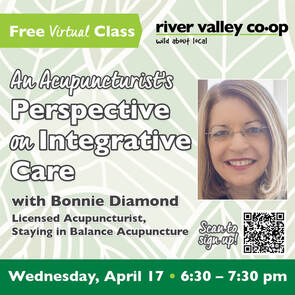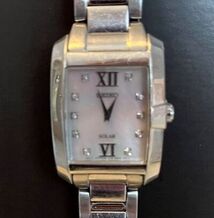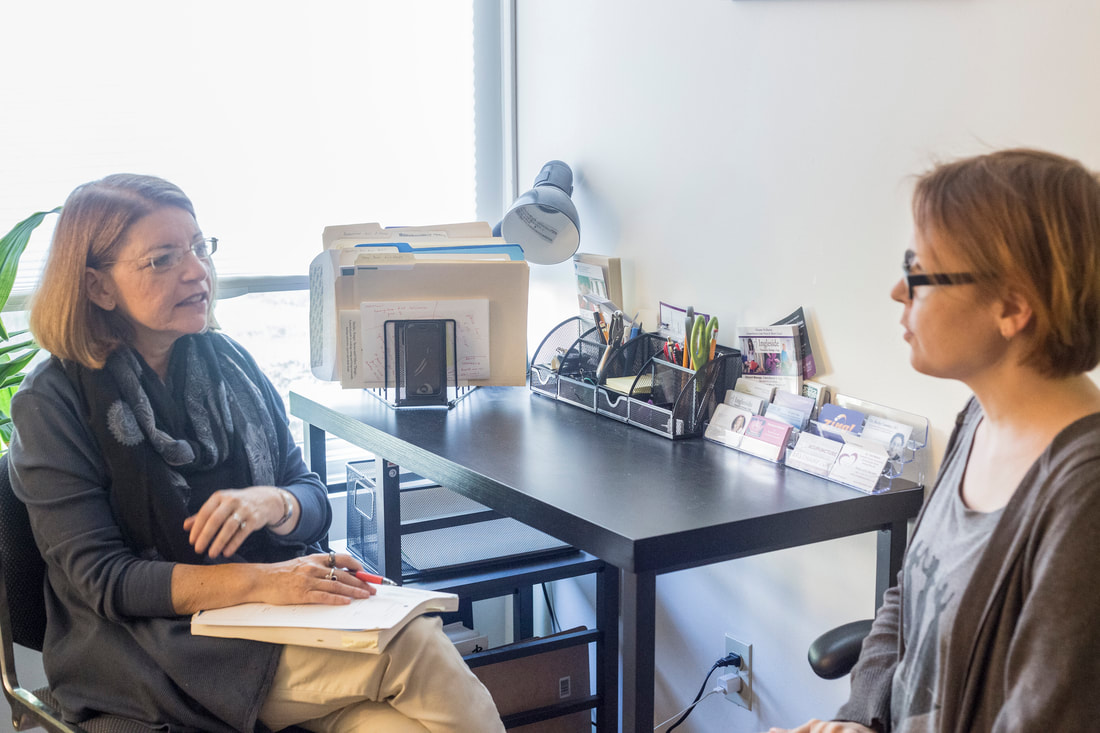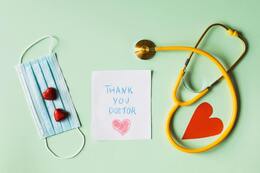 Do you have an upcoming doctor’s appointment that you’re a little anxious about? Or have you put off scheduling one? Read on to learn why Western Medicine is important and how to make the most out of medical visits. Western Medicine excels at two important aspects of health, screening for serious illness and offering lifesaving treatment. I had firsthand experience with this when I was diagnosed with and then treated for chronic kidney disease, eventually getting a kidney transplant. This care kept me off of dialysis and extended my life by many years. It also meant that I had many, many medical appointments over the past two years. Here are some of the things that I learned. Get an annual physical. There are health conditions like cancer and heart and kidney disease that can progress undetected for a long time. While being evaluated as a potential donor, they discovered a growth on one of my husband’s kidneys. Because this was detected early, they were able to remove it before it became problematic. Work with doctors and nurses that you like and respect. When I had a lot of uncertainty about whether I would find a kidney donor, it was so helpful to have a doctor who assured me that he would help me get through whatever happened. When I found a donor, my transplant team was fabulous. They listened to me, honored my requests and answered my questions. Arrive early for appointments. Be sure to leave plenty of time to get to appointments. Give yourself extra time in case there’s traffic. Leave time to find parking and the medical office. Doctor’s visits can be stressful and it helps to be able to relax for a few minutes in the waiting room. My blood pressure could be up to 30 points higher than usual when I first arrived for an appointment. When I sat and relaxed, it would drop significantly. Bring a list of medications & supplements that you are taking. Every doctor, nurse and medical assistant that I met with so appreciated having a one-page list of medications and supplements that I was taking, including what time I took them. This made their job much easier. Bring a written list of questions. Most medical appointments are over in a short amount of time. If you write down your questions it’s less likely that you’ll forget questions that you have. Ask questions about things you don’t know or are concerned about I learned that as a patient you always have the right to ask questions about your illness and about medications and procedures that have been recommended. Bring someone with you. My husband went with me to every visit having to do with my transplant. He remembered things that I was a little fuzzy on. We were able to compare notes about our opinions about the different transplant centers that I was evaluated at. Get a second opinion. If you’re dealing with a serious medical condition, it’s helpful to get a second opinion. It takes a little more time, but the payoff is either increased confidence in the original diagnosis or knowing that you may need to do more research to get the care that you need and deserve. Get clear about your preferences. Ultimately, each of us has to make decisions about our care. Surgery and medications come with side effects and risk. It’s helpful to know what these are. It’s also helpful to know which medications are absolutely needed and which are optional. I decided that I didn’t want to be on Prednisone, often prescribed for life after a transplant. I had to specifically ask for this based on my understanding of its risks. I made a good case, and while it was used right after surgery, I was off of it by the time I left the hospital with the blessings of my doctors. Oxycodone, Tramadol, Pepcid and Senna were prescribed after surgery but when I asked, I was told that I didn’t have to take them. My team was fine with me taking extra strength Tylenol and eating healthy. Western medicine offers lifesaving care. And, in the world we live in today, we have to be good advocates for ourselves. It can be a lot and at times overwhelming. I hope that my recommendations will make the process easier for you. As we advocate with our doctors, nurses and other providers, we also have to take care of our minds and bodies on a day-to-day basis. In my practice, along with treatments, I offer practical advice to help my patients with diet, exercise and emotional well-being. I write a lot about this in my blog on health and my Yummy Healthy Food blog. Take a look. If you’re interested in individualized, ongoing care, please do schedule a free online consultation. All best, Bonnie
0 Comments
Ever feel overwhelmed with health issues? Not sure what to do next? In these moments, you may not realize all the ways that you are taking care of yourself. I just heard about a practice that might be helpful. Get an empty jar and some pennies. Each time you do something that is part of the healing process, put a penny in the jar. Take a deep breath and put a penny in the jar. Make a cup of tea, put a penny in the jar. Make a phone call to one of your health care providers, put a penny in the jar. Call a friend, put a penny in the jar. Eat a vegetable, put a penny in the jar. Etc… This process will shift your mindset from one of scarcity to one of abundance. It will help you dig deep into the resources that you currently have. It may give you new ideas about what your next steps will be. It will help you find small changes that over time will have a positive impact on your life and health. Each time I have to personally deal with health challenges, I learn a little more about the healing process. I’ll be sharing some of the lessons that I’ve learned in an online workshop at River Valley Coop on Wednesday, April 17th at 6:30. Remember, even when it’s difficult and painful and takes time, you have the power to heal. With Blessings, Bonnie 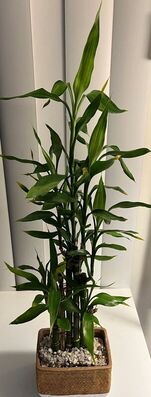 Sometimes we have to carry illness with grace. By grace I mean deep acceptance and compassion for what our bodies are going through. While we may not be able to recover full health, grace gives us the courage to continue on when the path is rocky. Most of you know that three months ago, I had a kidney transplant. I was incredibly lucky. I found an altruistic living donor, an angel who gave me years of life and health. My transplant team couldn’t have nicer or more available. My nephrologist of twenty years assured me that he would help me get through whatever was in store for me. I have good health insurance and most of my medical costs were covered. And still, this has been a hard journey for me. I have moments of feeling fear and uncertainty. I still feel deeply vulnerable. I know that for the rest of my life I will need to be on immunosuppressant medication. As wonderful as my healthcare team is, I’m tired of medical appointments and blood work. I wish I no longer had to track all the numbers that determine my health. In these moments, I lean into grace. I count my blessings. I think of all the people who have touched my life. I have deep compassion for the 80,000 people in this country who are still waiting for a kidney. I have deep compassion for everyone who struggles with pain and chronic illness. Illness is a hard journey. It’s one that is not so much discussed. The miracle of medicine (and it truly is miraculous) comes with the cost of discomfort and a type of loneliness. I can count of one hand the number of people I know who have either been a kidney donor or recipient. In the midst of pain and discomfort, grace reminds me I am not alone. Grace reminds me that my life is worth getting the care I need. Grace reminds me that in getting care I’ll be able to help others in need. Grace reminds me that illness is a part of the human condition. The great thing about grace is that it’s always available. I encourage you to take a moment right now to tap into something that expresses life’s beauty. Maybe it’s an object, a place, a song or a piece of art. Think about an angel in your life. Someone who showed up when you were in need. If you feel lost or unmoored, feel the ground beneath your feet. Say these words to yourself, “I am loved. I am cared for. I am important. I am present in this moment. There is a spaciousness in life that holds me.” These are the ways that we find grace. If you need encouragement, do reach out to me. It you’ve had moments of grace in your life, I’d love for you to share them with me. May you find grace in your most challenging moments. From my heart to yours... 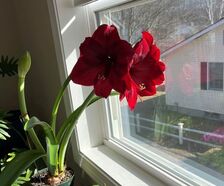 Have you heard the term “glimmers?” In books I’ve been reading about trauma, it is the opposite of triggers – those instances when we feel anxious and afraid. Our brains are wired to look for and remember those moments as a way to keep us safe. We learn pretty early in life not to touch a hot stove and to look both ways when crossing the street. We also remember the highlights of our lives – things like weddings and graduations, travel to faraway places and professional successes. But what about the smaller moments when the world seems to align and we feel safe and well-regulated? Deb Dana, a licensed social worker, called these moments glimmers. Though she specializes in complex trauma, the idea of glimmers can be used in the treatment of chronic pain. What if we brought increased attention to the times when we’re feeling physically good? Moments during the day when pain subsides. And what if we wrote down how we were feeling in those moments? To help you do this, I’ve created a file called “Tracking Glimmers.” You can download it by scrolling down on my forms page located here. Try using it for a week. Does anything shift for you? Feel free to send me an email and let me know what your experience is like. May you have more glimmers as you go through your day! One of the real gifts of going through a kidney transplant, aside from the obvious, was being told that healing would take time.
No one expected that I would feel fine right away. They told me that I would have medical appointments and blood work each week for a month and physical therapy twice a week. After that initial month, PT would end and appointments would be every other week, then monthly. Because I was given this information, I was able to have reasonable expectations while I was going through the healing process. I could plan on taking time off from my practice to heal. When I felt like crap, I could tell myself that in a week or two, I would feel better. Having time was a real luxury. It’s one that I encourage you to lean into if you are struggling with illness, pain or distress. But how to do this in a 24/7 fast-paced world with all kinds of obligations? Here are my recommendations: -Make realistic expectations about the amount of time it will take to recover Begin by letting go of the need to recover immediately. Talk to your healthcare providers for some guidance. If no one knows the timeframe, begin by giving yourself a few weeks if you’ve suffered a minor injury and a few months for something more severe. -Get curious about what’s actually going on in your body It’s helpful to take stock. Write down a list of what symptoms are bothering you. If you’re more of a visual creative type, make a drawing of the areas where you feel pain. -Spend time each day engaged in something that leads towards your health Many injuries and bugs heal on their own. Initially, rest may be what your body needs most. Give yourself time for that. If you’re still not feeling better, there is a good chance that you’ll need to do something – contact a nurse or doctor, reach out to a complementary practitioner, do some gentle stretches, make some changes to your diet. In addition to these practical steps, it’s important to be in the right mindset. Set aside 5 minutes every day to imagine yourself feeling better. Before my transplant surgery, every time I was exercising on my bicycle trainer, I would imagine doing this post transplant. (I felt so great when that actually happened!) The brain and nervous system want you to befriend them. They function better when you give them care and support. -Add comfort to your life. Do something that brings you joy. Listen to a favorite song. Light a candle. Take a warm bath. It’s important to have moments where you feel good even in the midst of illness. -Prioritize your obligations. While your recovering, there will be many things that will go by the wayside. It’s important to choose what you absolutely need to do and what you can put aside for when you’re feeling better. When you consciously do this, you’ll feel more in control and less overwhelmed. -Track your progress Your body is always giving you information. Pay attention to what it is telling you. The easiest way to do this is to write down what you are experiencing. In my practice, I offer a booklet that I call “Roadmap to Health,” which contains monthly and weekly calendars. It’s helpful to have something that tells you your progress in a glance. Here’s a link to my booklet. Your favorite journal will also work. Feel free to share with me a time that you recovered from an illness or injury. And if you are still struggling, know that you can reach out. With you on the journey… Bonnie Sometimes our lives need a little reset. I realized the importance of this when I took a day trip to Kripalu Center for Yoga and Health. I left my house a bit frazzled. I was in a hurry and had just enough gas in the car to make it most of the way to Lenox.
Fortunately, after a pit stop in Lee, I arrived. Once I got there, my whole frame of mind shifted. I parked the car, put my phone in a locker and had a full day to do whatever I wanted to with no responsibilities. I took a dance yoga class, went on a mindfulness kayak ride and had a delicious lunch and dinner. The weather was beautiful and for that day life was easy and effortless. I truly felt cared for. When we’re busy and stressed out, it may seem counterintuitive to slow down. With so much to do, we tend to hurry and check off one more thing on our to-do list. But slowing down really helps us focus on what is most important. It helps us gain clarity. It resets our nervous system. We can then face our lives with more wisdom and grace. It’s summer and the world feels a little slower. I encourage you to take time off –several days or a week if you can. But even a day or an hour in a different setting can offer the benefits of rest and relaxation. That’s one of the reasons that acupuncture and craniosacral therapy can be so helpful. They give the body and mind time to relax, reset and rejuvenate. If you’re feeling like you could use some TLC, take a moment to schedule a free consultation or an acupuncture or craniosacral therapy appointment. It could be the first step to a life of more ease. With you on the journey… Bonnie I recently watched the movie "Air," the story behind Air Jordans and was drawn to the line "A shoe is always just a shoe until someone steps in it."
Our bodies are like that. For the most part, we share the same organs, muscles, tendons and body parts. These tend to work in similar ways. Our hearts beat, our lungs fill with air, our stomach and intestines digest food. We all have this in common. But the container that we live in is just that, a container. A group of living organs. I've been exploring for most of my life what it means to step into this container. What does it mean to become embodied? As I’ve explored this, I’ve found that listening to what my body is saying is an incredibly powerful thing. Stretching my spine every morning has gotten rid feelings of neuropathy in my legs. Strengthening the muscles in my legs has meant no more knee pain. Lifting weights at home has kept my bones strong. Eating foods that have a high nutritional content and taste good, has meant a healthier GI tract. Working with patients, I find that the same thing is true. As they gain an awareness of how to stand and move properly, their pain is reduced and their lives are filled with more ease. When they eat healthier, things like brain fog and acid reflux go away. This isn’t about rocket science, rather it’s small, steady changes that over time allow us to be more embodied, more conscious of our experience in our physical being. I continue to help people have this experience of living healthier by offering Japanese Acupuncture, Craniosacral Therapy and Wellness Counseling. If you are interested in improving your health, here are 2 ways to get started.
Here’s to your good health and happiness! This is a follow-up to last week's blog. Here’s why something as simple as walking outdoors for 20 minutes each morning can radically improve your health.
If you’ve tried to start walking or exercising and haven’t been able to continue with a steady practice there are some tricks to keep you motivated. Take a look at my blog, "Creating One New Habit." . If you aren’t able to walk because it causes pain, consider scheduling a free ½ hour consultation with me. We can talk about ways that treatments can help reduce inflammation, lower pain levels and get you more relaxed and on track to achieve your treatment goals. Know that I’m here to support and guide you on your journey to health! Sending healing energy… Bonnie 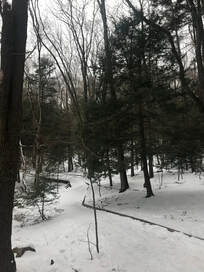 Your Journey to Health Your Journey to Health As we approach the new year, I’m reminded of something I learned 30 years ago when I was struggling with Chronic Fatigue Syndrome, and I began a lifelong journey towards health. There is always a path forward. It’s not an instant cure or a guarantee of life without pain. Instead, it’s way to find more ease, more joy, less discomfort. At times, this is hard to believe. Life can throw us curve balls and it may seem difficult to find light in times of darkness. What’s true is that light is always there. When I was in acupuncture school, I was taught that, in ancient times, the herbs a person needed would grow just outside their home. I believe that this teaching remains relevant. The things we need to heal are close by – in the food we eat, the exercises we do, in the quieting of the mind, in the restorative power of sleep, and in the arms of the people we love. Life gets busy, stressful, and often we forget our own miraculous ability to heal. I’m in my 60s now. My body is less forgiving than it once was. Yet when I listen to it, I’m constantly finding ways of renewed health. You can too! My work has always focused on small, sustainable changes that lead to improved health and well-being. Here are my top 8 suggestions for 2022 to live a life filled with health & happiness, all of which are low-cost and readily available. 1) Eat more vegetables. The easiest way to incorporate this suggestion is to add a serving of vegetables to your diet every day. Choose something that is not part of your current diet. I recommend adding a vegetable to your midday meal. Soup, roasted vegetables, and stir-fries are all good choices. See my food blog for recipes. 2) Take a walk. This is one of the easiest forms of exercise. Remember to wear a good pair of sneakers or hiking boots. Walking offers the benefit of movement along with an opportunity to experience the healing powers of the outdoors. Here are some places in Western Massachusetts. 3) Buy a buckwheat pillow. I recommend this to my patients who experience neck pain. A buckwheat pillow conforms to the shape of your neck and offers support. No more waking up with a stiff neck! Here are recommendations for what to buy. 4) Get some extra fiber. We should be getting a least 30-50 grams of fiber a day. Fiber is found in whole grains, nuts, seeds, fruits & vegetables. Even when we eat these foods, we often don’t get a s much fiber as we need. Add a tablespoon of this prebiotic fiber to your diet. 5) Relax your muscles more. I don’t love the term stretch. Stretching is thought of a something that we tack on to our exercise routines. I think of strength training and aerobic exercises as activities that contract and strengthen muscles. Muscles that are constantly in a contracted state end up causing pain and discomfort. Muscles need time to relax. Think of stretching as having a conversation with the tight parts of your body. Breathing in to restricted areas and allowing them to relax creates a life filled with more ease. My personal favorite way to do this is with a Pilates on the Ball workout. Pilates on the Ball DVD Pilates on the Ball Book & DVD 6) Cut back or eliminate processed foods, sugar, diary, caffeine and alcohol. Processed foods are devoid of the nutrients that our body needs to function optimally. Sugar creates inflammation in the body. Diary can cause overproduction of phlegm. Studies show that caffeine offers some health benefits as it is rich in anti-oxidants, but I see many patients who are revved up from coffee and have trouble getting a good night’s sleep. Alcohol turns to sugar in the body and heavy drinking is associated with increased risk of death. While there isn’t a one-sized-fits-all recommendation for intake of these foods, most people are better off either eliminating them or making sure they’re used occasionally and consciously. I absolutely believe that we should enjoy the food we eat and not feel like we’re depriving ourselves. There are so many healthy, nutritious meals. Take a look at my Yummy, Healthy Food Blog 7) Start a meditation practice. This requires no special knowledge or equipment. You just slow down, go inside and sit with what is. Traditional Chinese Medicine teaches that each of the 5 main organs has a corresponding positive and negative emotion and when these emotions are in balance this leads to better health. Listen to my 5 element 5 organ meditation and find this balance. 8) Practice gratitude. The more you count your blessings, the more blessings you will find to count. Our nervous systems are wired to look for danger, which is a survival mechanism. But trust me, most of the time immediate danger doesn’t exist. When we retrain ourselves to look for beauty, joy and appreciate the good things in our life, we have the ability to experience a paradigm shift. The world can become a safe and forgiving place. Here’s one way to begin a gratitude practice. One thing that I’ve learned over the years is that the path forward is not a solitary one. We humans are wired to need connection with each other. None of us live in isolation. If you find yourself struggling, reach out to a trusted friend or family member. You might be surprised to learn that they are going through something similar to you. Shared pain is pain halved. If you’re looking for additional support, I offer free ½ hour consultations to new patients or those who haven’t seen me in a while. Simply, schedule one here: https://www.bonniediamond.com/free-consultation.html Remember, we’re all in this grand experiment we call life together. Sending blessings for the holiday season and the new year! Bonnie  Last week when I was treating a patient, she asked this question, “So how does acupuncture work?” It’s a question that I had asked as a student at the New England School of Acupuncture. The truth is that we don’t actually know how acupuncture works from a Western medical perspective. East Asian medicine has a model that is vastly different from science, which focuses on separating the different parts of the body and has an emphasis on cause and effect. Acupuncture looks at the body as a whole and focuses more on the relationship of a part to it’s whole. Western Medicine is more absolute, Eastern Asian medicine more relative. Because these models are so different, it’s difficult to explain one in terms of the other. That said, we do have some clues about how acupuncture works from a Western medical perspective.
All of this is exciting news because it offers confirmation of what I find when treating patients. Pain decreases, the body goes into relaxed states, colds & flus last for shorter amounts of time. Interested, intrigued by how this works and how it might help you? I’m offering free 30 minute consultations. Sign-up here. With you in health, Bonnie Sources: https://www.sciencedirect.com/science/article/pii/S200529011300174X https://oshercenter.org/2020/08/26/harvard-study-finds-acupuncture-can-tame-cytokine-storms-in-mice/ |
AuthorIn practice for over 20 years, Bonnie Diamond offers individualized, heart-centered care using a pain-free, Japanese style of acupuncture. Her work is influenced by her nine year struggle with and complete recovery from Chronic Fatigue Syndrome. Archives
April 2024
Categories
All
|
Serving Easthampton, northampton, Holyoke, Springfield, Chicopee, Westfield and Western Massachusetts
|
Hours are Tuesday-Thursday, 11am-7pm
|
247 Northampton Street, #27 Easthampton, MA 01027 781-718-6325 Get directions Get information on other complementary health resources recommended by Staying in Balance. Pioneer Valley Community Resources |
Copyright 2000-2022 All rights reserved.
